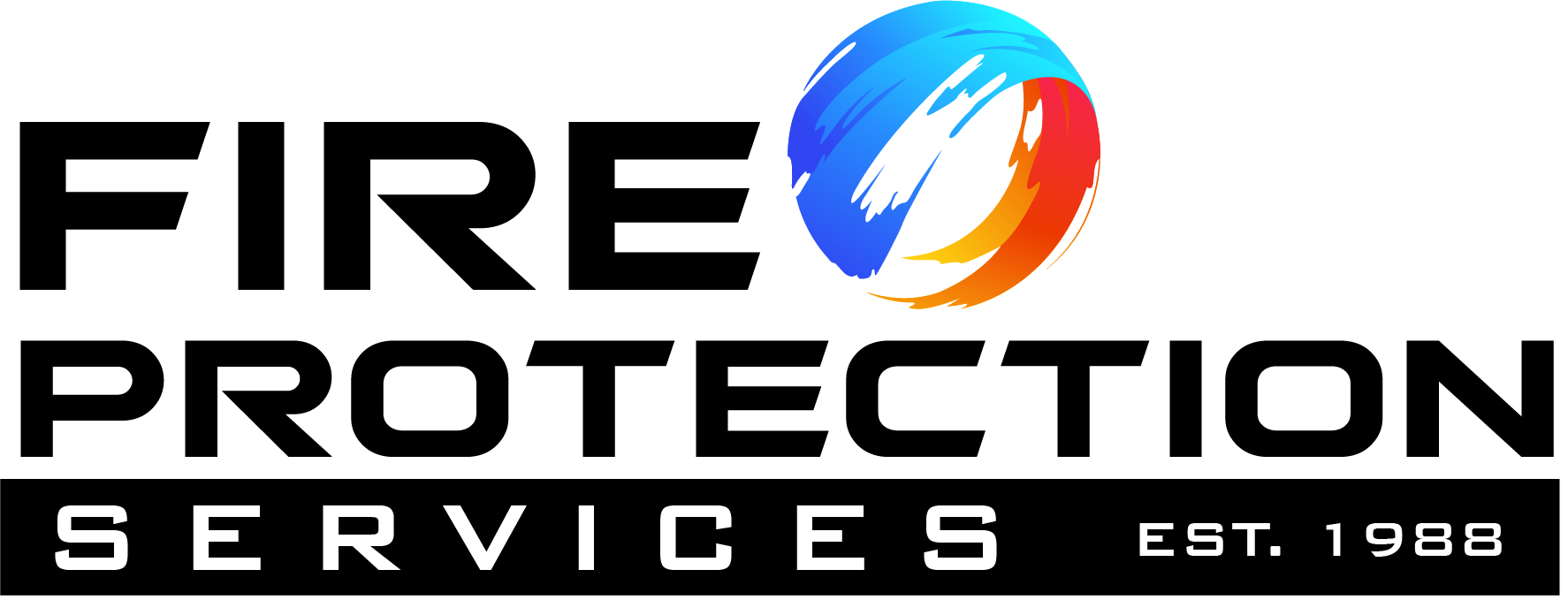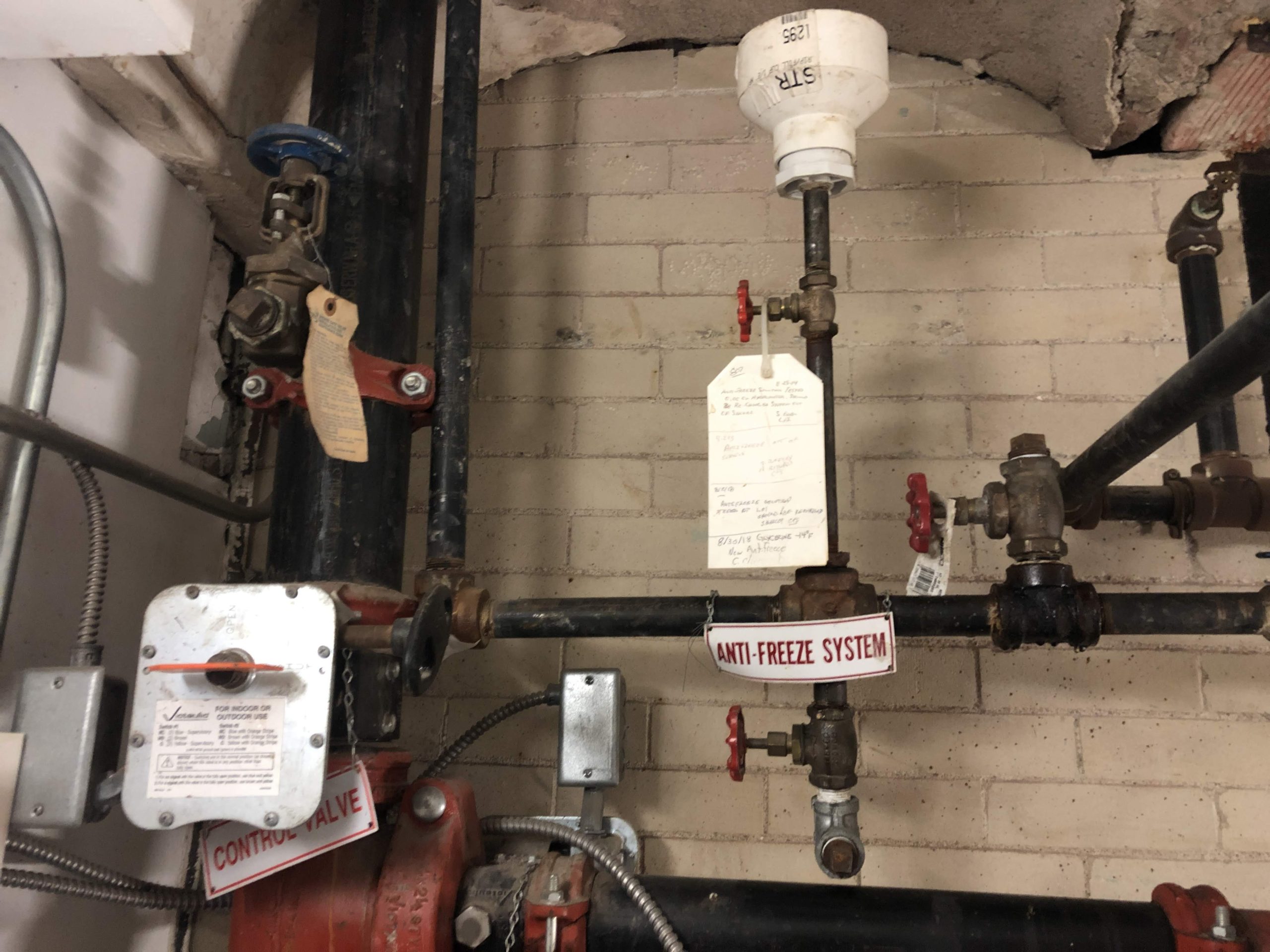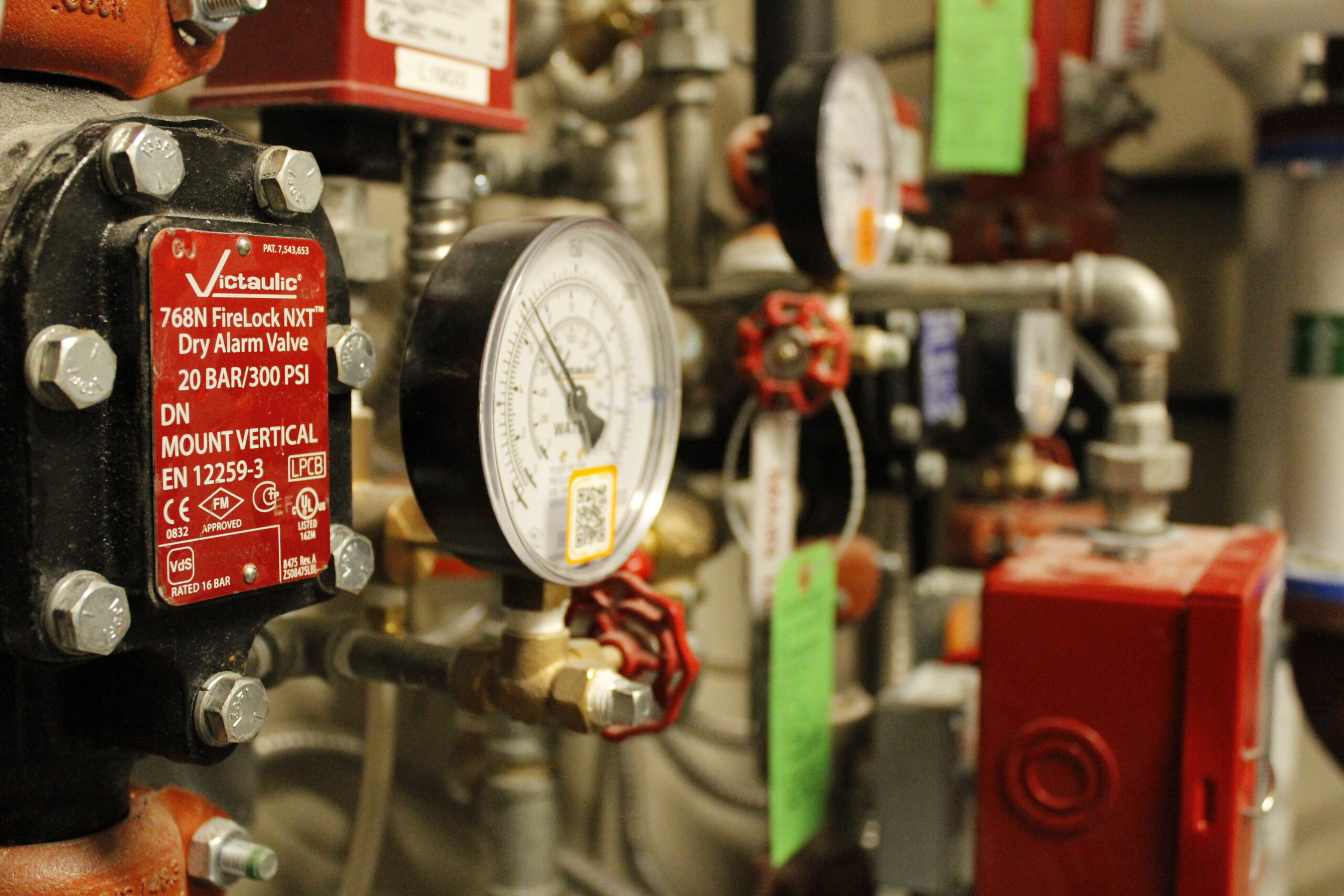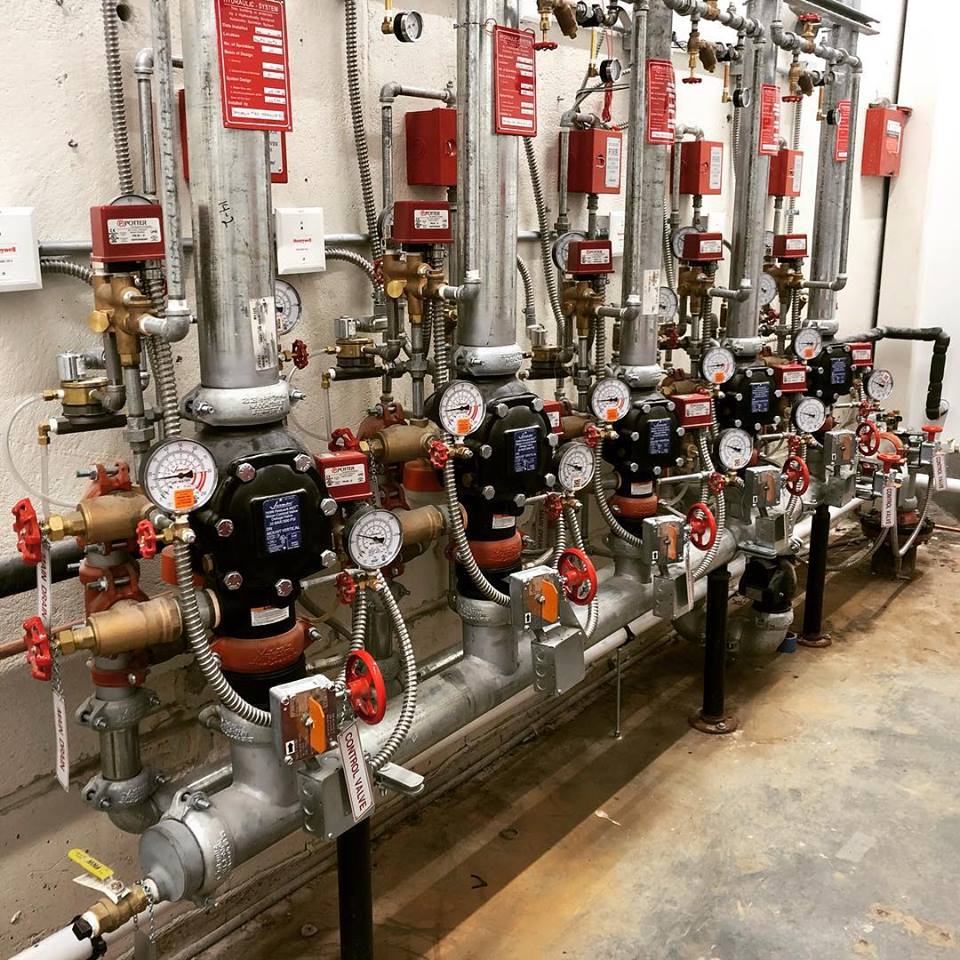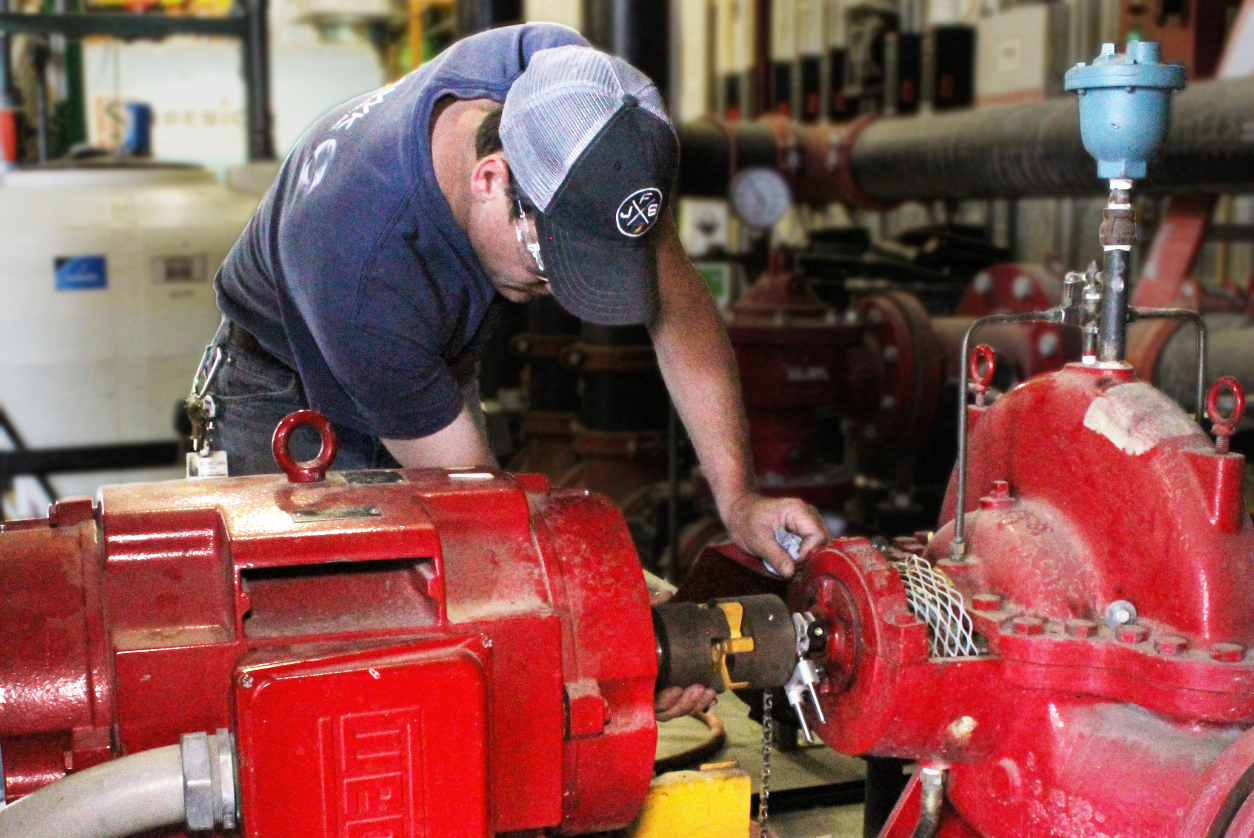Fire Sprinkler Systems
There are several different types of fire sprinkler systems and components that go into the protection of your facilities. Learn more about each of the different sprinkler systems and the application of each.
Wet Sprinkler System
A wet sprinkler system is an automatic type sprinkler system where piping contains water so that upon the event of a fire and sprinkler head activation, water discharges instantly and begins to contain and suppress the fire. Wet systems are the most common form of fire sprinkler systems and are the easiest to maintain.
Typical Application
- Warehouses
- Office Buildings
- Multi-family Apartment Buildings
- Distribution Centers
- Health Care Facilities
- Educational Facilities
- Mixed-Use Facilities
- Churches / Religious Gathering Facilities
- Most Facilities
Antifreeze Sprinkler System
An antifreeze sprinkler system is a wet sprinkler system that incorporates an antifreeze solution, typically propylene glycol or glycerine, in the piping system. This allows for installation in areas that are exposed to freezing temperatures. Antifreeze systems or antifreeze loops are typically more cost effective than what a dry sprinkler system would be.
Typical Application
- Multi-family Apartment Buildings
- Breezeways
- Penthouses
- Facilities where dry systems are impractical or proper pitch cannot be obtained
Dry Sprinkler System
A dry sprinkler system is another type of sprinkler system that employs automatic sprinklers that are attached to a piping system which contains air or nitrogen under pressure. The release of which (as from the opening of a sprinkler head) permits the water pressure to open a valve, known as a dry pipe valve, and the water then flows in to the piping system and out the opened sprinkler(s).
Typical Application
- Attic Spaces
- Parking Garages
- Unheated Warehouses
- Facilities where antifreeze systems are impractical
Pre-Action Sprinkler System
A pre-action sprinkler system, similar to a dry system, is a type of sprinkler system that employs automatic sprinklers that are attached to a piping system that contains air or nitrogen that may or may not be under pressure. The difference being that pre-action systems have a supplemental detection system installed in the same area as the sprinklers. There are three types of pre-action systems: single interlock pre-action system, double interlock pre-action system, and a non-interlock pre-action system.
Single Interlock Pre-action System – Admits water to sprinkler piping upon operation of detection devices.
Double Interlock Pre-action System – Admits water to sprinkler piping upon operation of both detection devices and automatic sprinklers.
Non-interlock Pre-action System – Admits water to sprinkler piping upon operation of detection devices or automatic sprinklers.
Typical Application
- Data Facilities
- Server Rooms
- Libraries
- Museums
- Other facilities that are highly sensitive to accidental water damage
Deluge Sprinkler System
A deluge sprinkler system is also similar to dry and pre-action systems being that the piping network does not contain any water and is therefore a dry pipe system. However, deluge sprinkler systems employ open sprinklers or nozzles. The deluge system is attached to a piping system that is connected to a water supply through a valve that is opened by the operation of a detection system (like a pre-action system) installed in the same area as the sprinklers or nozzles.
Unlike dry and pre-action systems, on deluge systems when the valve opens, water flows into the piping system and discharges from all sprinklers or nozzles attached to the system.
Typical Application
- Aircraft Hangar
- Power Plants
- Chemical Storage or Processing Facilities
- Other High Hazard Facilities
Fire Pumps
Fire pumps are designed to provide supplemental liquid flow and pressure dedicated to fire protection only. When the water pressure present is not substantial enough to supply the sprinkler system, a fire pump gives your sprinkler system(s) the boost it needs to operate as designed. Typically, fire pumps are found in large distribution centers or warehouses, high-rise buildings, or facilities with an inadequate city water supply.
Backflow Prevention Devices
Sprinkler systems, domestic water systems, and irrigation systems alike are supposed to have backflow prevention devices installed to help protect the drinking and potable water supply. These devices are to be inspected and tested annually. Jayhawk Fire Sprinkler can assist with all of your backflow preventer needs.
Backflows Tested & Serviced
- Fireline Backflow Prevention Devices
- Domestic Backflow Prevention Devices
- Irrigation Backflow Prevention Devices
